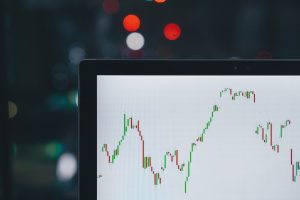Volatility is a measure of the amount of fluctuation or risk involved in the price movement of a financial asset. In the forex market, volatility is an essential factor that traders use to determine the potential risk and reward of a particular currency pair. Volatility rating forex is a way to evaluate the level of risk associated with a currency pair, which helps traders make informed decisions about their trading strategies. In this article, we will explain how to calculate volatility rating forex and why it matters.
Calculating Volatility Rating Forex
There are various methods to calculate volatility rating forex, but the most commonly used method is the standard deviation approach. The standard deviation is a statistical measure that shows how much variation or dispersion exists from the average price of an asset. In forex trading, the standard deviation is used to calculate the volatility of a currency pair by measuring the distance between the current price and the average price over a given period.
To calculate the volatility rating forex, follow these steps:
Step 1: Choose a currency pair and a time frame
The first step in calculating the volatility rating forex is to choose a currency pair and a time frame. The time frame can range from a minute to a year, depending on the trader’s preference and trading strategy. For example, a day trader may use a 15-minute time frame, while a long-term trader may use a weekly or monthly time frame.
Step 2: Calculate the average price
Next, calculate the average price of the currency pair over the chosen time frame. To do this, add up all the closing prices of the currency pair for the selected period and divide the result by the number of data points. For example, if you are using a daily time frame for the EUR/USD currency pair for the last 30 days, add up the closing prices for the last 30 days and divide the result by 30 to get the average price.
Step 3: Calculate the standard deviation
Once you have the average price, calculate the standard deviation of the currency pair’s closing prices over the chosen time frame. Standard deviation measures the dispersion of the data points from the average price. A higher standard deviation indicates higher volatility, while a lower standard deviation indicates lower volatility.
To calculate the standard deviation, use a formula such as STDEV.P in Microsoft Excel or a calculator that has a standard deviation function. For example, if you are using the last 30 days of closing prices for the EUR/USD currency pair, input the data into the standard deviation formula to get the standard deviation value.
Step 4: Calculate the volatility rating forex
Finally, calculate the volatility rating forex by dividing the standard deviation by the average price and multiplying the result by 100. This will give you a percentage that represents the level of volatility of the currency pair over the chosen time frame. The higher the percentage, the more volatile the currency pair is.
For example, if the standard deviation of the closing prices for the EUR/USD currency pair for the last 30 days is 0.0035 and the average price is 1.2000, the volatility rating forex is calculated as follows:
Volatility rating forex = (0.0035 ÷ 1.2000) × 100 = 0.29%
This means that the EUR/USD currency pair’s volatility over the last 30 days is 0.29%.
Why Volatility Rating Forex Matters
Volatility rating forex matters because it helps traders understand the level of risk and potential reward associated with a particular currency pair. High volatility means that the currency pair is prone to large price movements, which can offer significant profit opportunities but also carry a higher risk of loss. Low volatility means that the currency pair’s price movements are more stable, which can be ideal for traders who prefer a low-risk trading strategy.
Traders can use volatility rating forex to determine their trading strategies, such as setting stop-loss and take-profit levels, determining position sizes, and choosing the appropriate trading style. For example, a day trader may prefer a highly volatile currency pair that offers numerous trading opportunities throughout the day, while a long-term investor may prefer a less volatile currency pair that provides a more stable return over time.
Conclusion
Calculating volatility rating forex is an essential factor in forex trading that helps traders evaluate the level of risk and reward associated with a currency pair. The standard deviation approach is a commonly used method to calculate the volatility of a currency pair, which requires traders to choose a currency pair and time frame, calculate the average price and standard deviation, and then divide the standard deviation by the average price to get the volatility rating forex. Understanding volatility rating forex helps traders make informed decisions about their trading strategies and manage their risks effectively.





